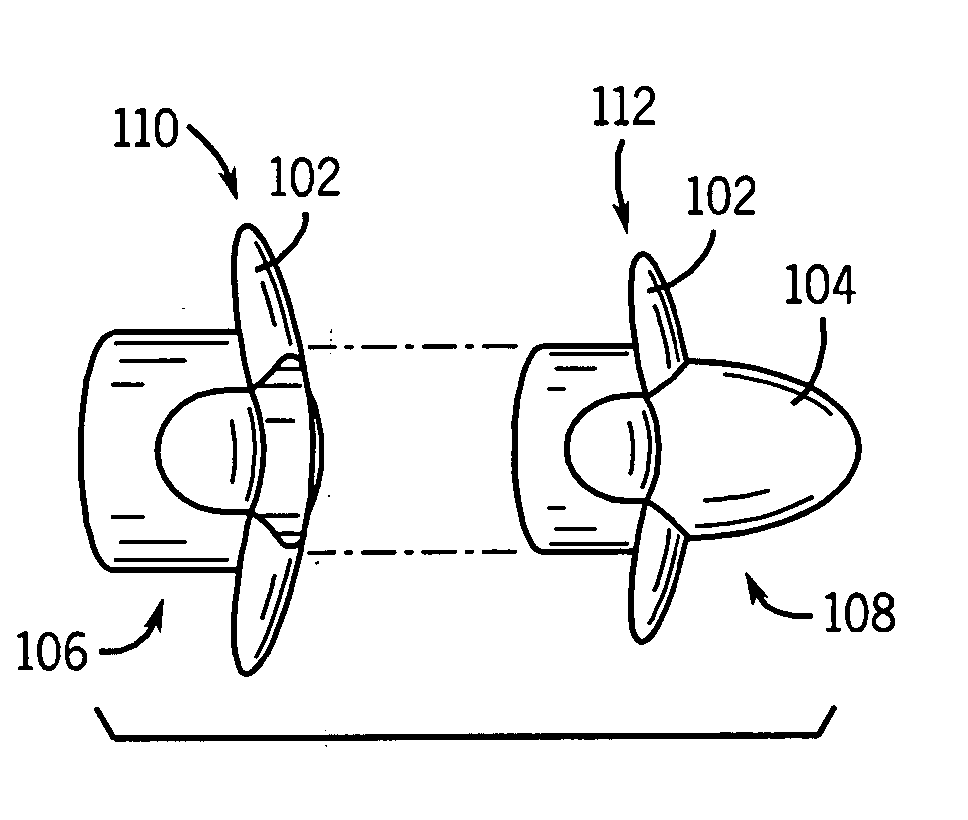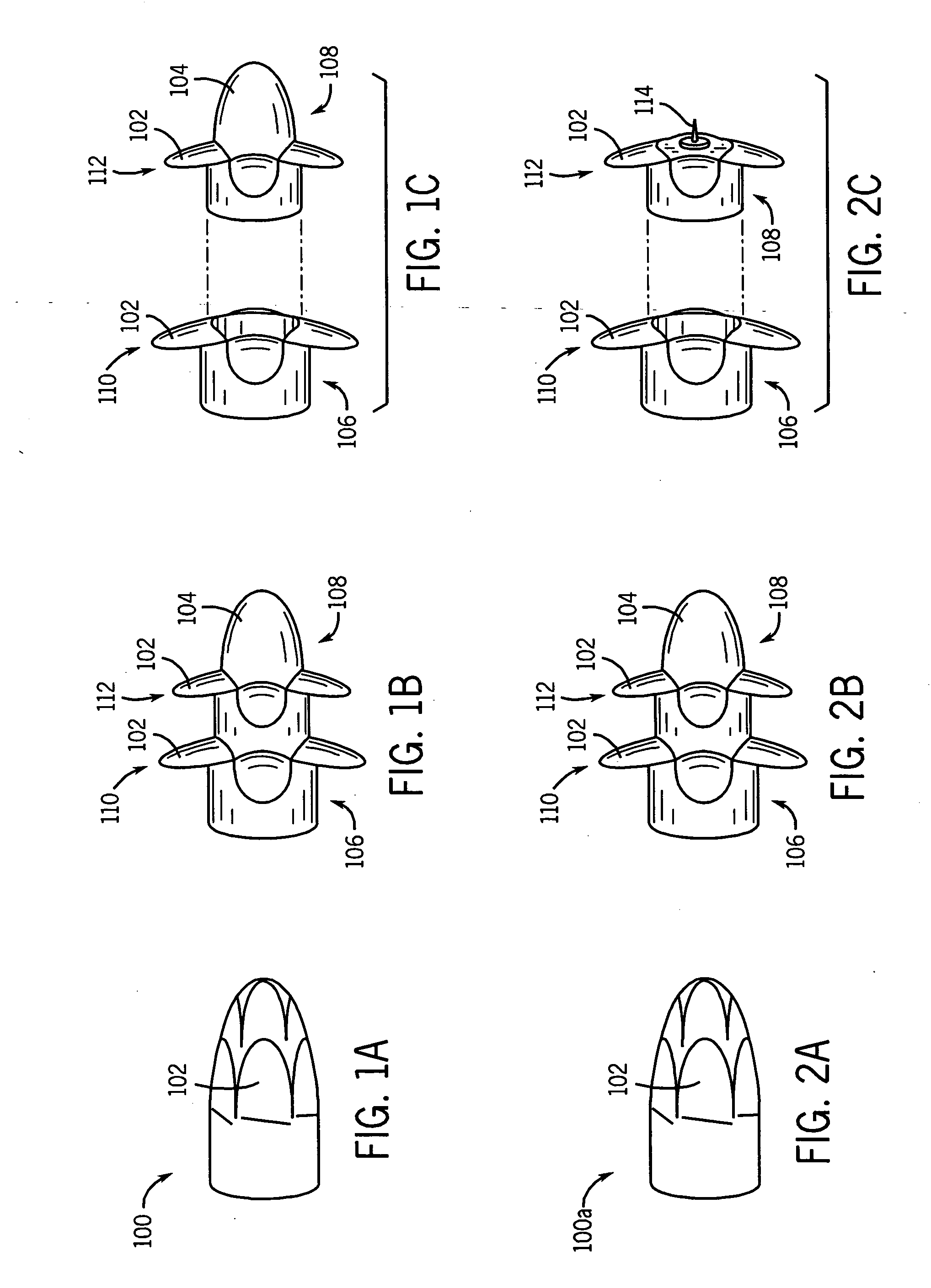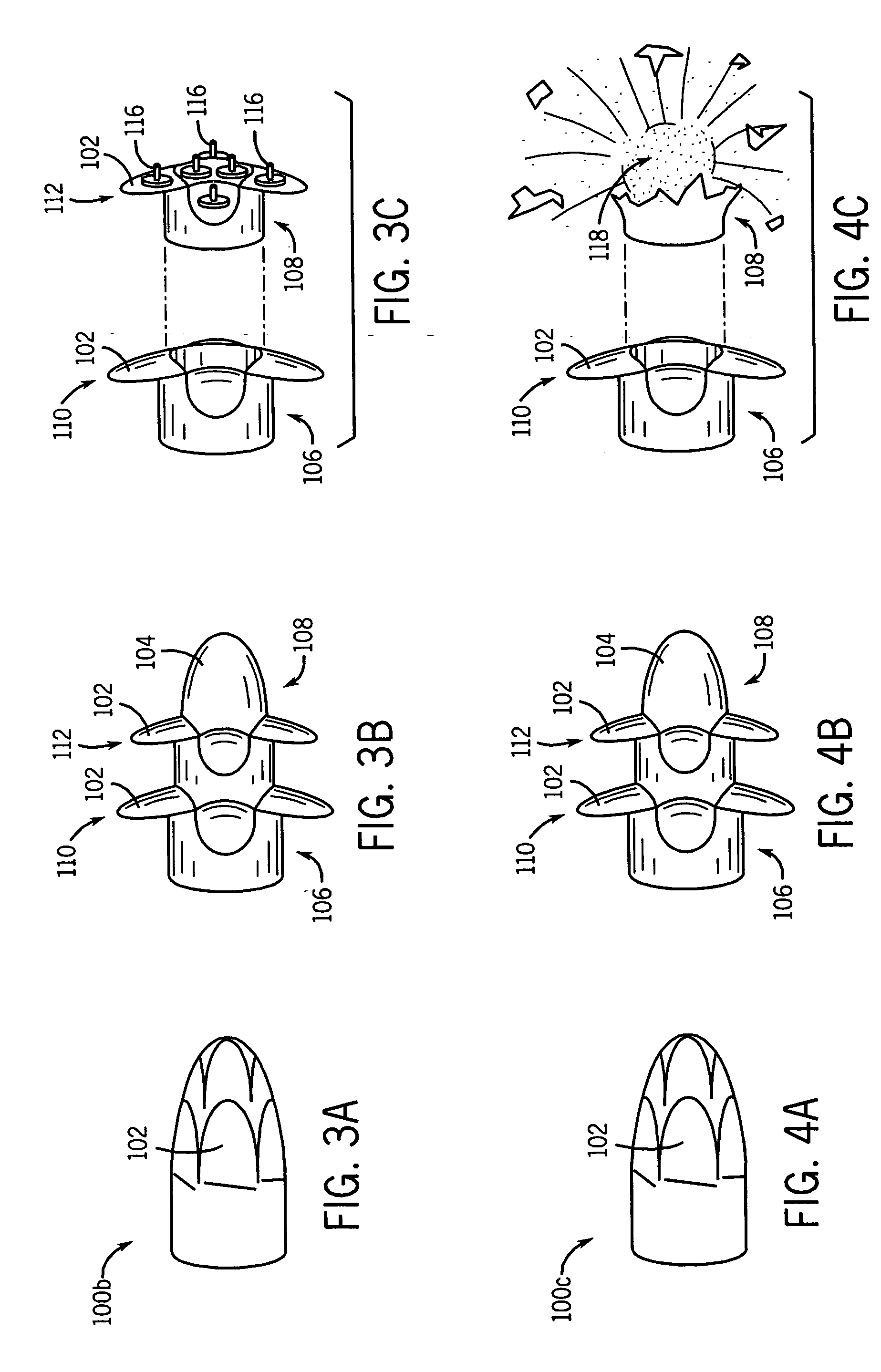Deployable bullets
a technology of bullets and bullets, applied in the field of bullets, can solve the problems of significant flaws in the design of all these types of personal security tools, rubber bullets still kill to often and only work, and achieve the effect of reducing the momentum of the bullet and increasing the footprint of the bull
- Summary
- Abstract
- Description
- Claims
- Application Information
AI Technical Summary
Benefits of technology
Problems solved by technology
Method used
Image
Examples
Embodiment Construction
[0030] In operation, a bullet of the present invention is fired from a small or medium caliber gun barrel. The bullet is generally constructed with deployable blades or other deployable portions which act to reduce the momentum of the bullet. As discussed below, the blades or other deployable portion of the bullet can be spring loaded and deployed after exiting the gun barrel. Preferably, the blades or other deployable portion of the bullet are deployed, at least partially, by the centrifugal force on the deployable portion due to the spinning of the bullet when it exits the gun barrel. In both preferred implementations, as discussed below, the blades or other deployable portion can have a weakened portion acting as a living hinge to aid in the deployment of the blades or other deployable portion. Furthermore, due to the airflow around the bullet, once the blades or other deployable portion begins to deploy, the airflow against the same will also aid in their deployment.
[0031] At a...
PUM
| Property | Measurement | Unit |
|---|---|---|
| distance | aaaaa | aaaaa |
| distances | aaaaa | aaaaa |
| impact pressure | aaaaa | aaaaa |
Abstract
Description
Claims
Application Information
 Login to View More
Login to View More - R&D
- Intellectual Property
- Life Sciences
- Materials
- Tech Scout
- Unparalleled Data Quality
- Higher Quality Content
- 60% Fewer Hallucinations
Browse by: Latest US Patents, China's latest patents, Technical Efficacy Thesaurus, Application Domain, Technology Topic, Popular Technical Reports.
© 2025 PatSnap. All rights reserved.Legal|Privacy policy|Modern Slavery Act Transparency Statement|Sitemap|About US| Contact US: help@patsnap.com



